
How to Use ACS712 Current Sensor 5A 20A 30A: Examples, Pinouts, and Specs
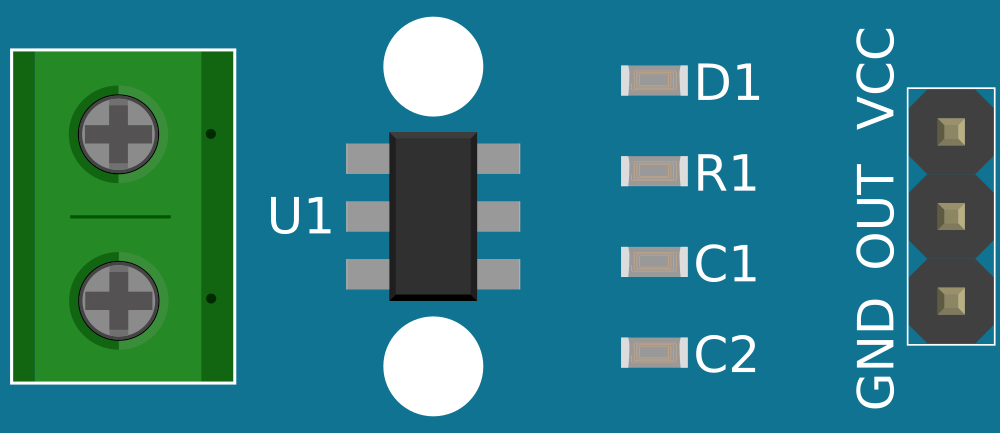
 Design with ACS712 Current Sensor 5A 20A 30A in Cirkit Designer
Design with ACS712 Current Sensor 5A 20A 30A in Cirkit DesignerIntroduction
The ACS712 Current Sensor is an economical and precise solution for AC or DC current sensing in industrial, commercial, and communications systems. The device operates on the principle of Hall-effect, which is the production of a voltage difference across an electrical conductor, transverse to an electric current in the conductor and a magnetic field perpendicular to the current. The ACS712 outputs an analog signal that is linearly proportional to the current passing through the IP+ and IP- pins of the sensor.
Explore Projects Built with ACS712 Current Sensor 5A 20A 30A
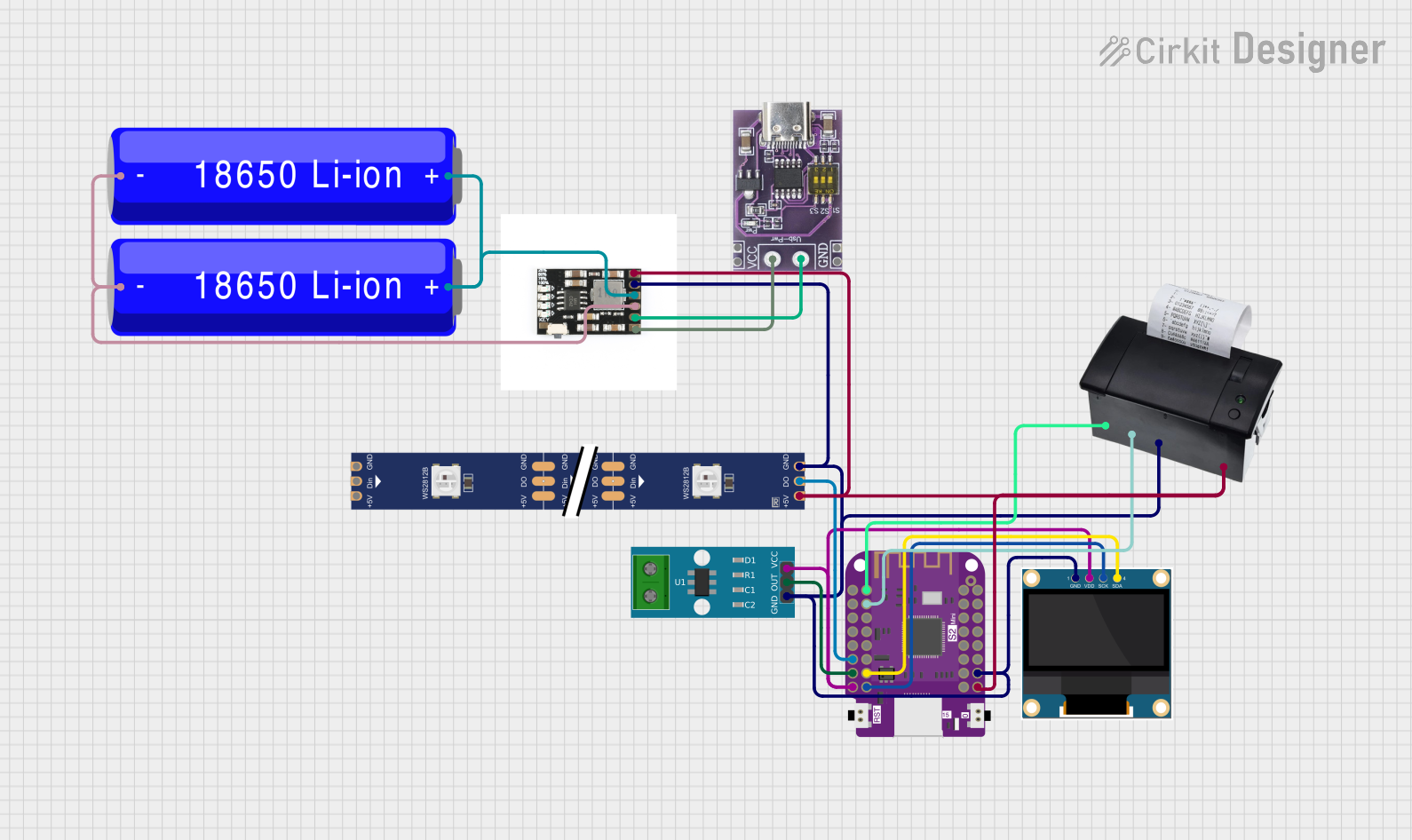
 Open Project in Cirkit Designer
Open Project in Cirkit Designer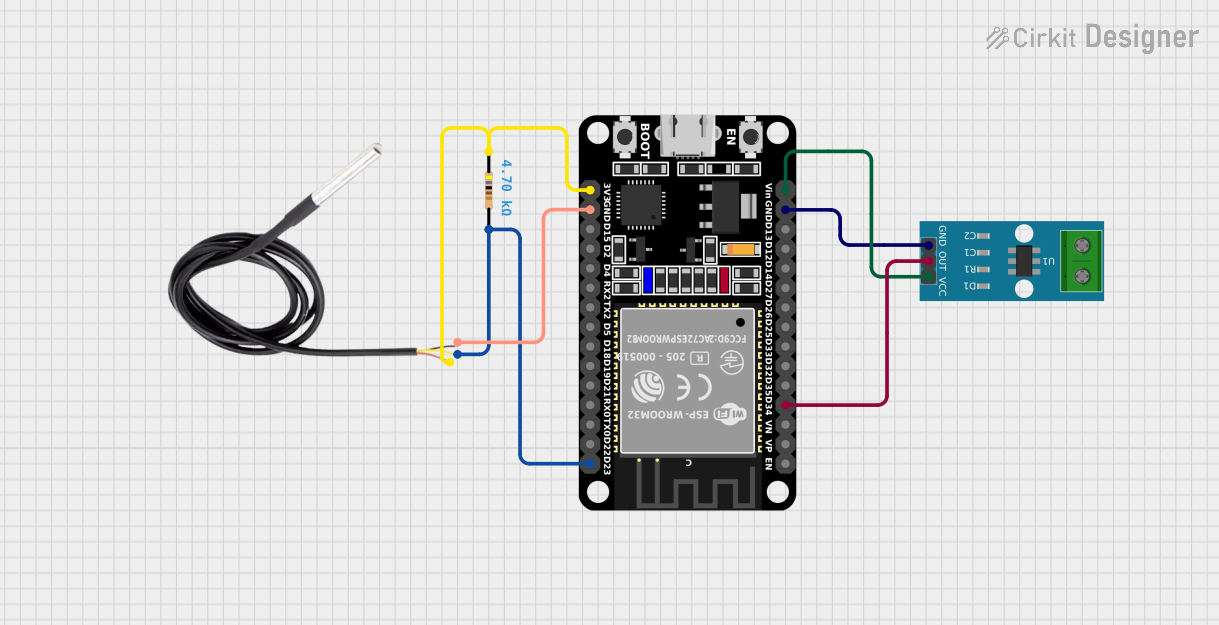
 Open Project in Cirkit Designer
Open Project in Cirkit Designer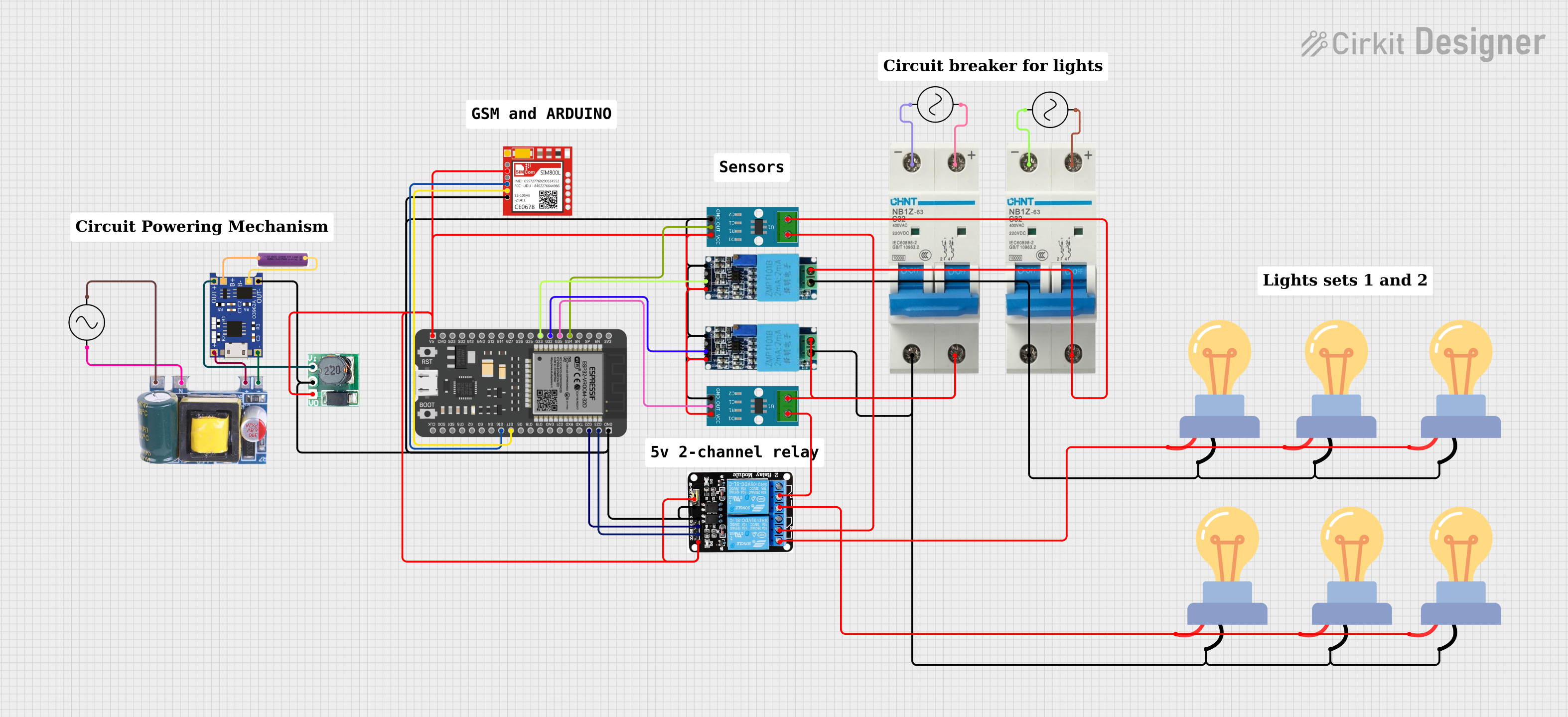
 Open Project in Cirkit Designer
Open Project in Cirkit Designer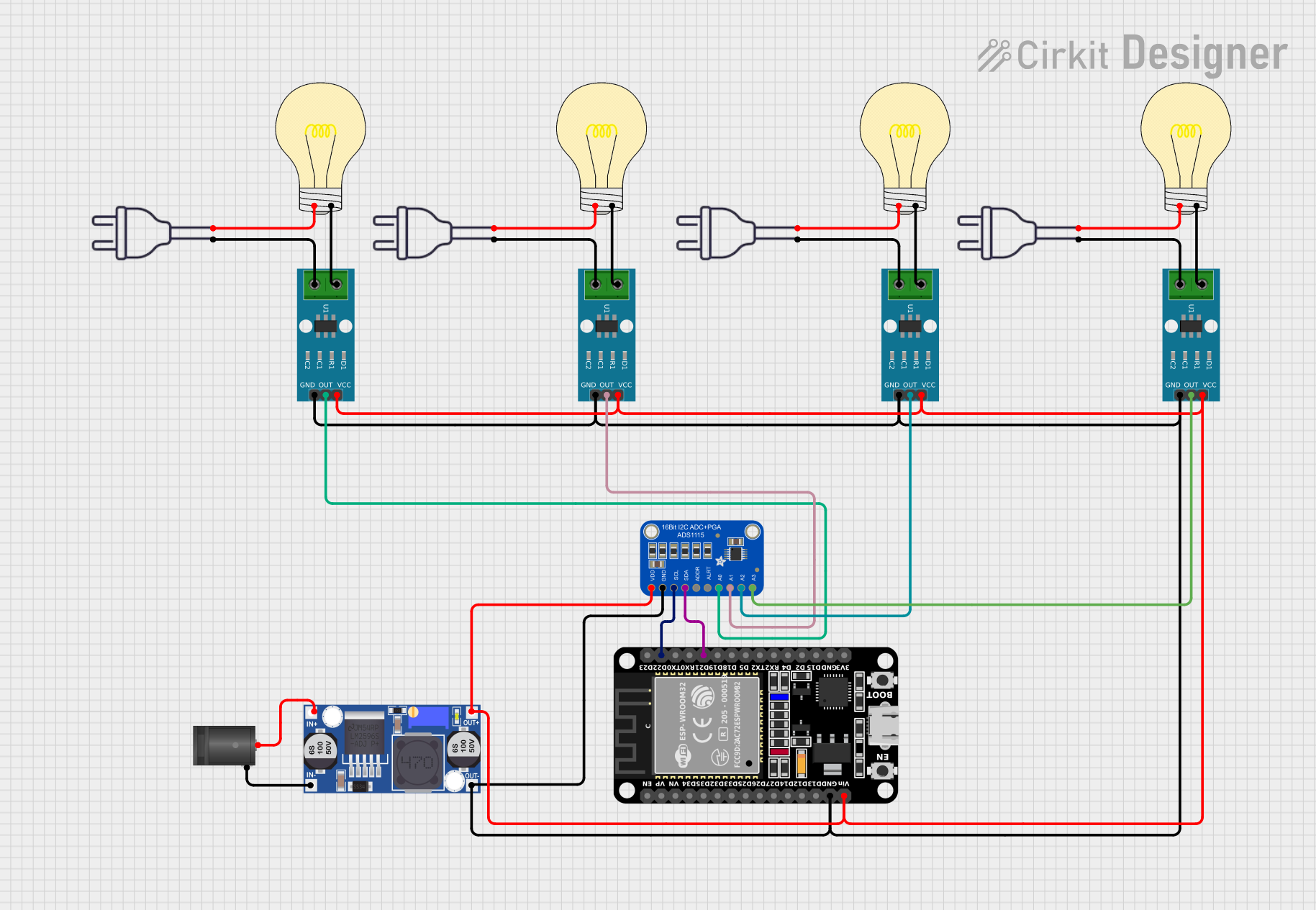
 Open Project in Cirkit Designer
Open Project in Cirkit DesignerExplore Projects Built with ACS712 Current Sensor 5A 20A 30A

 Open Project in Cirkit Designer
Open Project in Cirkit Designer
 Open Project in Cirkit Designer
Open Project in Cirkit Designer
 Open Project in Cirkit Designer
Open Project in Cirkit Designer
 Open Project in Cirkit Designer
Open Project in Cirkit DesignerCommon Applications and Use Cases
- Power supply units
- Battery monitors
- Overcurrent protection systems
- Motor control
- Load detection and management
- Inverters
Technical Specifications
Key Technical Details
- Supply Voltage (Vcc): 4.5V to 5.5V
- Output Voltage (Vout): Analog 0-5V
- Sensitivity: 185 mV/A (5A), 100 mV/A (20A), 66 mV/A (30A)
- Operating Current: 13 mA
- Frequency Bandwidth: 80 kHz (typical)
- Operating Temperature: -40°C to +85°C
Pin Configuration and Descriptions
| Pin Number | Name | Description |
|---|---|---|
| 1 | Vcc | Power supply (4.5V to 5.5V) |
| 2 | GND | Ground connection |
| 3 | OUT | Analog output voltage |
| 4 | IP+ | Current input |
| 5 | IP- | Current output |
Usage Instructions
How to Use the Component in a Circuit
- Connect the Vcc pin to a 5V power supply.
- Connect the GND pin to the ground of the power supply.
- Connect the IP+ and IP- pins in series with the load whose current you wish to measure.
- The OUT pin will output an analog voltage proportional to the current through the sensor.
Important Considerations and Best Practices
- Ensure that the current does not exceed the rated maximum for the specific model of the ACS712 you are using (5A, 20A, or 30A).
- The sensor is sensitive to magnetic fields; keep it away from magnets or wires carrying large currents.
- Use bypass capacitors close to the power pins to minimize noise.
- The output voltage is centered at Vcc/2 when no current is flowing through the sensor. This is typically 2.5V with a 5V supply.
Example Code for Arduino UNO
// ACS712 Current Sensor Example Code for Arduino UNO
const int analogIn = A0; // Connect the sensor output to analog pin A0
float sensitivity = 0.185; // Sensitivity for the 5A model (change as needed)
float offsetVoltage = 2.5; // Offset voltage for zero current (Vcc/2)
void setup() {
Serial.begin(9600);
}
void loop() {
float voltage = analogRead(analogIn) * (5.0 / 1023.0); // Convert analog reading to voltage
float current = (voltage - offsetVoltage) / sensitivity; // Convert voltage to current
Serial.print("Current: ");
Serial.print(current, 3); // Print current with 3 decimal places
Serial.println(" A");
delay(1000); // Wait for 1 second before next reading
}
Troubleshooting and FAQs
Common Issues Users Might Face
- Inaccurate Readings: Ensure that the sensor is properly calibrated, and the offset voltage is correctly set to Vcc/2.
- No Output Voltage: Check the power supply connections and ensure that the sensor is not damaged.
- Noise in the Signal: Use capacitors for filtering and keep the sensor away from high-current wires and magnetic fields.
Solutions and Tips for Troubleshooting
- Calibrate the sensor by measuring the output voltage with no current flowing and adjust the offset voltage in the code accordingly.
- Use twisted pair wires for the current leads to reduce electromagnetic interference.
- Implement software filtering techniques like moving average to smooth out the signal.
FAQs
Q: Can the ACS712 sensor measure both AC and DC current? A: Yes, the ACS712 can measure both AC and DC currents.
Q: What is the accuracy of the ACS712 sensor? A: The accuracy can vary, but it is generally within a few percent of the actual current.
Q: How do I increase the resolution of my current measurements? A: Use a microcontroller with a higher resolution ADC or an external ADC with higher resolution.
Q: Is the ACS712 sensor isolated from the high current path? A: Yes, the sensor IC incorporates isolation to protect the electronics from high current paths.